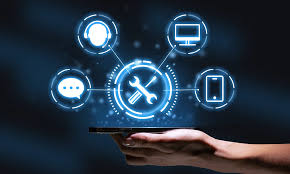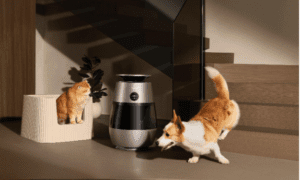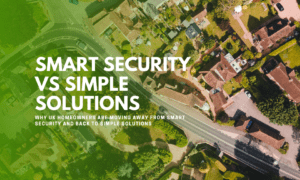How to Make Your Devices Work for You, Not Against You
There’s a moment—small, quiet, almost imperceptible—when you realize your phone has stopped being a tool and started being a tyrant. Maybe it’s 11:37 PM and you’re still scrolling. Maybe it’s when you reach for your device before you kiss your partner good morning. Maybe it’s when your child tugs at your sleeve and your eyes are still locked to the screen.
Whatever it is, it hits you.
We were promised convenience. Connection. Smart homes and smarter lives. But somewhere between the ping of another notification and the ever-growing pile of unread emails, technology became less of a helping hand and more of a silent boss breathing down your neck.
But here’s the truth: your devices are just tools. They’re not sentient (yet). They’re not in charge. And with the right approach, you can make them serve you again.
This isn’t about throwing your phone in a lake or retreating to a cabin in the woods. This is about reclaiming control—intentionally, gently, and without losing your sanity.
The Invisible Drift
It doesn’t happen all at once. You don’t wake up one day thinking, “I’m going to let Instagram dictate my self-worth today.” But the drift is real.
You start using your phone to check the time, and five minutes later, you’re knee-deep in a comment thread about something you don’t even care about. You buy a smartwatch to track your steps, but now you’re being buzzed for low-priority Slack messages during dinner. You download a productivity app to get more done—only to find yourself tweaking task colors instead of doing the actual tasks.
Sound familiar?
The drift is slow. Sneaky. And it happens to all of us.
But so does the snapback. That glorious moment when you realize: I’m allowed to set boundaries with my devices. In fact, I have to.
You’re the Boss—Not the Apps
Let’s be clear: tech isn’t evil. Your phone isn’t the villain. It’s not trying to ruin your life.
But most apps are designed to keep you engaged. Your attention is currency. The longer you stay, the more ads you see. The more you scroll, the more the algorithm learns.
So you’ve got to take the power back.
Start small. Disable non-essential notifications. Yes, even those little “Just checking in!” nudges from Duolingo. Schedule app updates instead of letting them distract you mid-task. Better yet, use Focus Modes—those underused features that allow you to silence social apps during work, or work apps during dinner.
You get to decide what earns your attention. And trust me: not everything does.
Real-Life Reboots
Let’s pause here for a few real-life examples, because theory is cute—but practice is power.
Aisha, 34, content strategist:
“I was drowning in productivity apps. Ironically, I spent more time organizing my life than actually living it. So I simplified everything to Google Calendar, a notebook, and one habit tracker. My anxiety dropped. My output? Surprisingly better.”
Leo, 29, freelance illustrator:
“I noticed I was doom-scrolling every night before bed. Now I leave my phone on the kitchen counter and read fiction before sleeping. I fall asleep faster. I dream more. My art improved.”
Maria, 42, single mom of two:
“I used to answer work emails at all hours because my phone was right there. Now I have a strict ‘off-hours’ rule. No notifications after 7PM. My kids notice. They say, ‘You’re not distracted anymore.’ That stung—but it pushed me to change.”
These aren’t superhuman feats. These are everyday people choosing to use tech, not be used by it.
Tools to Actually Help
So what does help? Let’s shift the focus to apps and devices that respect your time, not steal it.
- RescueTime or Screen Time (built into iPhones): Track where your time goes. Awareness is the first step.
- Notion, Evernote, or Apple Notes: Keep things organized without a million tabs open.
- Pomodoro timers (like Focus Keeper): Work in focused sprints with real breaks.
- Newsletters over doomscrolling: Choose your info. Don’t let it overwhelm you.
- Smart speakers (with limits): Set reminders, play calming music, control lights—hands-free, not mind-free.
It’s not about being anti-tech. It’s about being pro-you.
Make It Personal
Here’s the emotional core of it all: your time, your energy, your attention—they’re sacred. And they’re finite.
If your phone makes you anxious, it’s okay to mute it. If checking email first thing in the morning messes with your mood, change your routine. If your smartwatch buzzes too often, turn off those alerts.
You are not a cog in a machine. You’re a human being with goals, dreams, and a life that deserves to be lived in full color—not filtered through pixels.
Let your devices be what they were always meant to be: tools. Helpful. Quiet. Supportive. There when you need them, silent when you don’t.
Redefining Cool
Do you know what’s actually cool? Being present.
It’s cool to leave your phone in your bag during lunch with friends. It’s cool to take photos after you’ve soaked in the moment. It’s cool to set a boundary and say, “I’ll reply tomorrow.”
It’s cool to use technology in a way that enhances your life—not interrupts it.
And let’s be honest: it’s cool to use AI tools wisely. For instance, many people are now embracing cool AI_images to create art, moodboards, and even personalized greeting cards. That’s tech with heart.
The Big Shift
The shift doesn’t require perfection. You don’t have to become a minimalist monk overnight.
But you do have to be intentional.
Start with one small step. Choose one habit to change. One app to delete. One rule to implement. Then another. And another.
Eventually, something strange and beautiful happens. You stop reaching for your phone out of habit. You stop feeling that background buzz of stress. You start to feel present. Grounded. Alive.
That’s when you know: your devices are finally working for you.



































